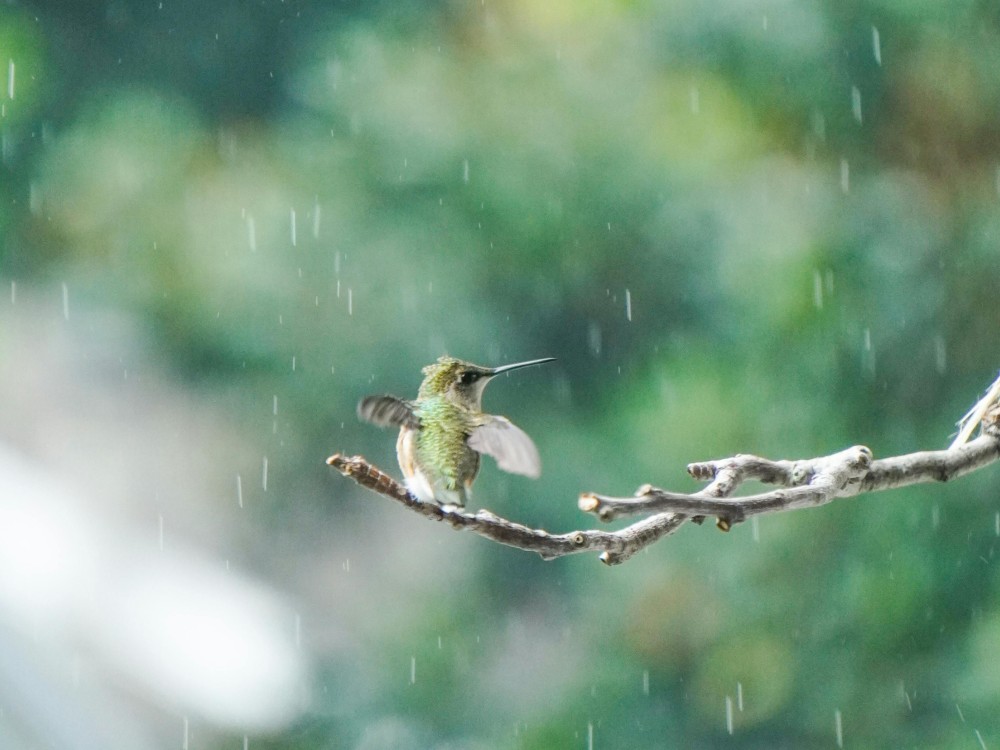How do rising temperatures affect birds?
July 21 was the hottest day ever recorded on our planet since record-keeping began. How do birds cope with hot days?
Dear Journey North Readers,
July 21, 2024 was the hottest day ever recorded on the planet since record-keeping began in the 1940s. Many parts of the world have been experiencing extreme temperatures recently (Dubai had a heat index of 144 ° F!), and some of you may be wondering how birds might cope with these conditions.
Birds, like many other animals (including humans), have a variety of ways to keep from getting too hot or too cold. One way is to seek shade, which is why it’s important to have trees and shrubs, especially in urban areas which produce a lot more heat. Birds will also bathe in water to cool their bodies, so providing a bird bath can be helpful.
Sometimes you may see a bird sitting on a perch or on the ground with its mouth open; what it’s doing is panting. By rapidly moving air in and out of the mouth, it evaporates moisture in the mouth, which cools the blood. That cooled blood then circulates around the body, cooling the rest of the bird.
Sometimes you might see certain species, like herons and egrets, owls, or pelicans fluttering their throat area, something known as gular fluttering. This does the same thing as panting, but uses less energy; it is analogous to humans “fluttering” our shirts to move air across our bodies and cool us down.
Finally, you might see a bird with its feathers fluffed up. Feather structure helps retain heat, which makes it such good insulation from the cold. When a bird gets too hot, it will raise the feathers to allow heat to escape.
How birds survive severe weather
Another thing that has been happening is we have been seeing storms, ranging from severe thunderstorms all the up to a Category 5 hurricane. To deal with thunderstorms, birds once again do the same thing as other animals (including humans), which is to seek shelter. They will find a tree or shrub and just hang on!
There was a Bald Eagle nest at the Bear Trace Golf Course in Harrison, TN that had a nest camera on it. About 10 years ago, a tornado hit near the nest, and people could watch what was happening. The female sat tight on the nest, protecting the eggs despite torrential rain and high winds that were blowing the tree back and forth.
As we approach fall migration, songbirds sometimes have to deal with hurricanes and tropical storms as they cross the Gulf of Mexico. Unfortunately, if they get caught in one, many will die.
Radar images have shown that sometimes migrating birds will make it to the eye, which has calm winds, and circle around in the eye until they are either exhausted or until the hurricane makes landfall. Birds may also sense the barometric pressure change associated with an approaching hurricane and change their course to avoid it.
Small-scale and short-term events are generally not a big problem for birds and other animals, but as the climate continues to change, we will have to see how they are able to cope with the bigger effects. Take care.
David Aborn



